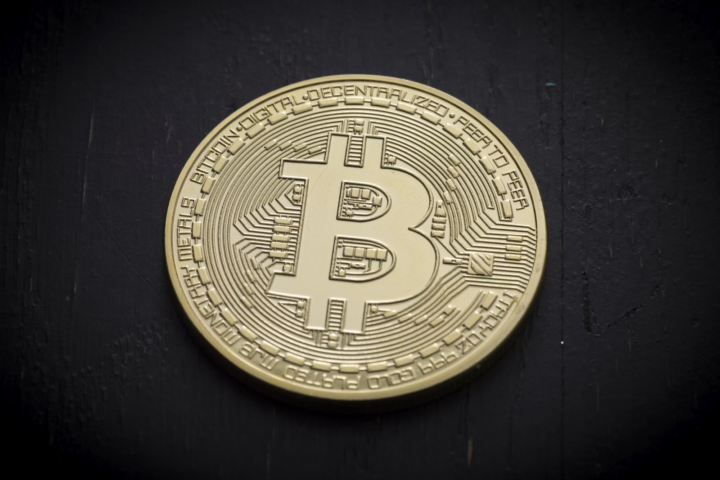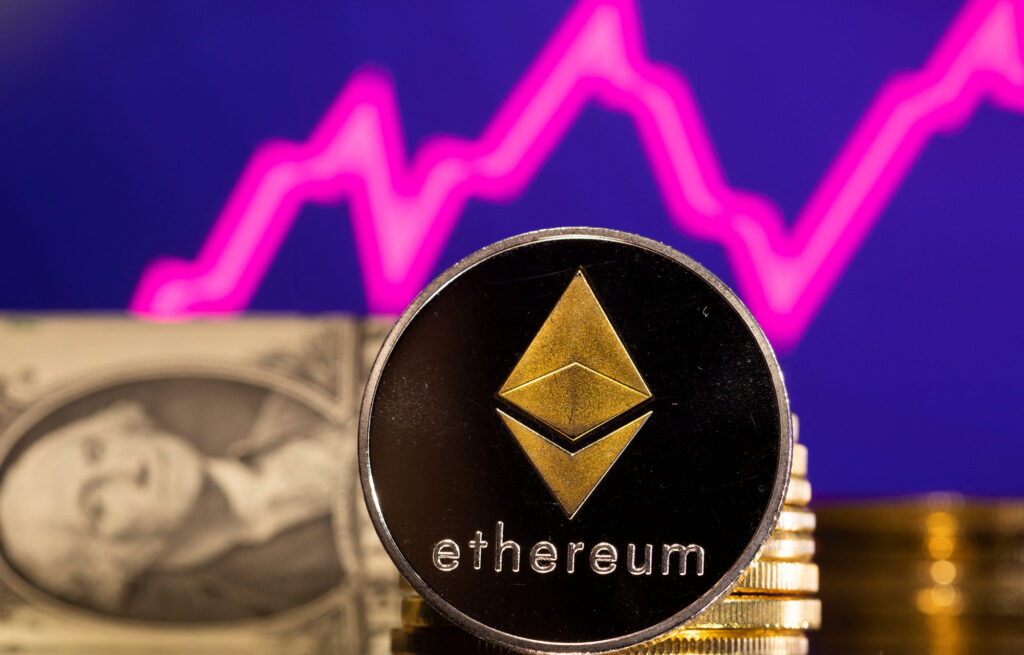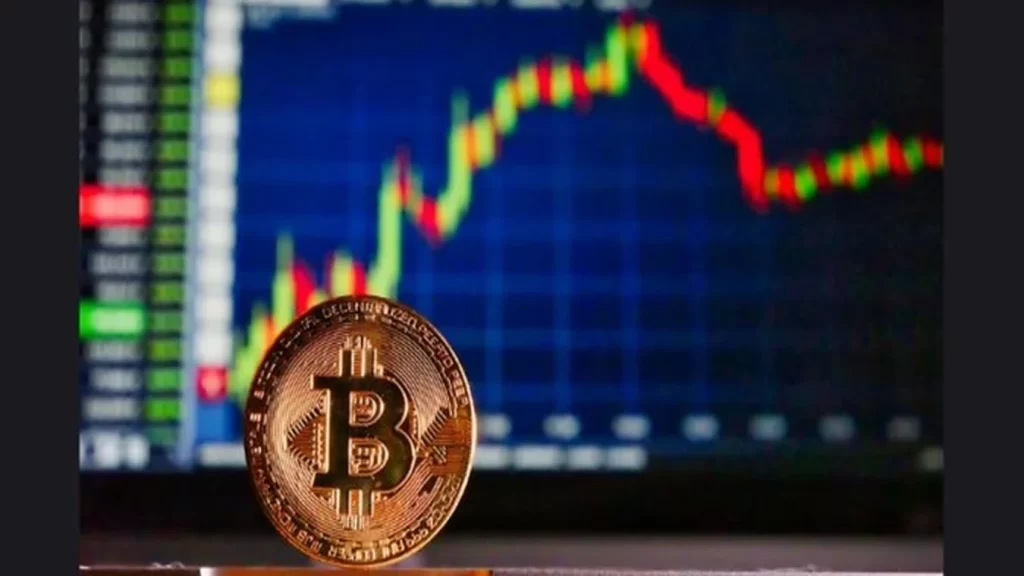Calls for the United States to establish a national Bitcoin (BTC) strategic reserve have sparked concern among market watchers, who warn of potential disruptions to both cryptocurrency prices and the U.S. dollar.
Haider Rafique, global managing partner for government and investor relations at crypto exchange OKX, argues that concentrating large amounts of BTC on a government balance sheet could undermine Bitcoin’s core appeal as neutral, decentralized money.
He posed a pointed question: “What happens in a few years if a new administration decides this was a bad idea?”
Rafique added, “Despite recent bipartisan support for crypto, it is essential to remember that administrative policies can change quickly. As circumstances change over time, the concentration of large amounts of BTC on a country’s balance sheet could represent a liquidation risk.”
Government Ownership Could Distort Markets
Rafique warns that governments holding significant portions of the BTC supply would be able to manipulate prices by selling large amounts at once.
Such a move could shock markets and undercut investor confidence in the cryptocurrency’s independence from state control.
Germany’s sale of 50,000 BTC in 2024, which helped keep prices below $60,000, serves as an example of how government action can weigh on the market, Rafique said.
Impact on the Dollar and Financial Markets
Beyond crypto itself, a U.S. Bitcoin reserve could signal weakness in the dollar, which underpins global finance.
Rafique warned that establishing a BTC reserve “would be a loss of confidence in the dollar.”
He argued that building a strategic reserve would tell investors the U.S. currency cannot sustain its value solely on economic fundamentals.
This could push investors to safe havens like gold or the Swiss franc while sparking sell-offs of riskier assets.
Rafique predicted such a chain reaction could trigger cascading liquidations across financial markets, ending in a sharp downturn as participants respond to a seismic shift in global finance.
Clashing with Bitcoin’s Original Ethos
Bitcoin advocates have long promoted the idea of nation-state-level treasuries as a path to making the cryptocurrency the global reserve asset.
However, critics warn that state-level control conflicts with Bitcoin’s decentralized design.
Centralized ownership could weaken its credibility as a currency that transcends politics and national boundaries.
Timing and Strategy Questions Remain
Some proponents argue a U.S. reserve would strengthen America’s monetary position and accelerate Bitcoin’s adoption as a unit of account.
But others urge caution, citing political risk and the volatility of the cryptocurrency market.
Without clear rules for accumulation and liquidation, a government reserve could transform from a strategic asset into a destabilizing liability.
As debate intensifies, policymakers face the challenge of integrating Bitcoin into national policy without compromising its foundational principles or global market stability.
Grayscale has suggested that the third quarter of 2025 may have represented a unique form of “alt season,” with altcoins outperforming Bitcoin and other major assets.
In its latest report, the asset manager noted that while cryptocurrencies across sectors posted positive returns, the pattern stood out for being distinct from traditional altcoin cycles.
“Bitcoin underperformed other market segments, and the pattern of returns could be considered a crypto ‘alt season’ — although distinct from other periods of falling Bitcoin dominance in the past,” the report explained.
Altcoins tied to smart contracts were particular beneficiaries, supported in part by the passage of the GENIUS Act in the US earlier this year.
Meanwhile, AI-related tokens and other niche sectors saw growth, while Bitcoin, Ether, and broader currency plays lagged.
Market Shifts Driven by Policy and Exchanges
Grayscale highlighted several trends that shaped Q3.
One was the growing number of corporate treasuries adding various tokens to their balance sheets.
Another was the increasing adoption of stablecoins in the United States, alongside stronger activity on centralized exchanges.
The firm argued that these elements combined to create a distinct market environment in which altcoins found momentum at Bitcoin’s expense.
Looking ahead, Grayscale speculated that pending legislation, including a digital asset market structure bill in Congress, could further support crypto markets in Q4.
Bitcoin’s Relative Underperformance
Although Bitcoin surged to a record high above $120,000 in August, its performance lagged other segments of the market.
Analysts suggested that both Bitcoin and altcoins were also trailing behind traditional assets such as gold and equities in reaching new records.
Stablecoin outflows from exchanges were cited as one factor weighing on crypto market dynamics.
This environment left altcoins better positioned to capture gains while Bitcoin’s dominance eased.
Optimism for ETFs
As a leader in crypto exchange-traded funds (ETFs), Grayscale noted that regulatory developments could provide a further boost.
The US Securities and Exchange Commission (SEC) recently approved new listing standards for digital asset ETFs.
One of Grayscale’s own products, a multi-asset crypto ETF, has already gained regulatory approval, giving investors exposure to a basket of leading assets including BTC, ETH, XRP, Solana, and Cardano.
The report concluded that optimism around ETFs and supportive legislation may sustain momentum for altcoins and the broader market heading into the final quarter of the year.
The FTX Recovery Trust has confirmed plans to distribute a new round of reimbursements to creditors, marking another significant milestone in the ongoing effort to compensate those impacted by the collapse of the exchange.
The entity, which was established to handle repayments after the platform’s bankruptcy, said the latest tranche will be worth around $1.6 billion. The distribution is scheduled for September 30, with creditors expected to see funds arrive in their accounts within three business days of the payment date.
Breakdown of September’s Distribution
According to details shared by the trust, the payout will be distributed across different categories of claims.
Dotcom Customer claims will receive a 6% payout.
US Customer Entitlement Claims will see a 40% distribution.
General Unsecured Claims and Digital Asset Loan Claims will receive a 24% share.
Convenience claims, which are capped at smaller amounts, will benefit from a 120% reimbursement as part of this latest tranche.
This distribution follows two earlier payouts, which began earlier this year.
In February, the trust released $1.2 billion to claimants, followed by a much larger $5 billion payout in May.
Assets Set Aside for Creditors
The FTX Recovery Trust has earmarked up to $16.5 billion to settle claims from creditors and former customers.
The scale of these reimbursements reflects both the size of the exchange prior to its downfall and the magnitude of losses suffered when the company entered bankruptcy.
The collapse of FTX in 2022 had a seismic effect on the cryptocurrency market.
The event deepened the bear market that was already underway, eroding confidence in digital assets and sparking greater scrutiny from regulators worldwide.
Even today, traders and investors watch developments around repayments closely, given the potential impact large inflows of capital back into the market could have on prices.
Sam Bankman-Fried’s Conviction and Appeal
The downfall of FTX has been closely tied to its former chief executive, Sam Bankman-Fried.
In November 2023, he was found guilty on seven charges, including wire fraud, wire fraud conspiracy, securities fraud, commodities fraud conspiracy, and money laundering conspiracy.
He was sentenced in March 2024 to 25 years in prison.
Judge Lewis Kaplan, who presided over the trial, described Bankman-Fried’s actions and the collapse of the exchange as a “serious” crime that justified decades of imprisonment.
Bankman-Fried’s attorneys are preparing to appeal the conviction this November.
They have argued that he did not receive a fair trial, claiming he was effectively treated as guilty from the start.
The defense has also asserted that FTX was not truly insolvent and that the company had sufficient funds to meet its obligations and repay customers.
Market Implications
With the third payout approaching, speculation continues over how these distributions might influence the wider crypto sector.
Some analysts believe creditors receiving significant amounts of cash could lead to renewed investment in Bitcoin and other digital assets.
Others caution that creditors may simply choose to exit the market altogether, pocketing their reimbursements instead of reinvesting.
Either way, the September distribution represents another step forward in one of the most closely watched bankruptcies in recent financial history.
Bitcoin entered the new trading week under pressure, with prices circling weekend lows of around $115,000 as investors looked ahead to a pivotal U.S. Federal Reserve meeting.
The world’s largest cryptocurrency avoided sharp volatility but remained on watch for signals that could shape its near-term direction.
Cautious Market Moves
Data from TradingView showed Bitcoin dropping toward $115,000 after peaking at $116,800 during Friday’s Wall Street session — its highest level since late August.
“Pretty clear price is being walked down here yet again going into a new week,” trader Skew wrote on X, adding that there was “some pretty decent bid depth & liquidity just below $115K.”
“Time to pay attention,” he concluded.
Other analysts emphasized that Bitcoin’s short-term goal was not a breakout, but rather regaining stability at key support levels.
Traders Focus on $114K Support
Popular analyst Rekt Capital explained that the immediate task was for Bitcoin to reclaim $114,000 as a firm base.
“The goal isn’t for Bitcoin to break $117k in the short-term,” he wrote.
“The goal is for Bitcoin to reclaim $114k into support first. Because that’s what would enable the premium-buying necessary to get price above $117k later on.”
Despite short-term uncertainty, Rekt Capital maintained that Bitcoin’s bull market remained intact and that fresh all-time highs were likely still ahead.
He added that a weekly close above $114,000 would be considered “bullish.”
Fed Rate Cut Expectations Dominate
Beyond Bitcoin, the spotlight was firmly on the Federal Reserve’s upcoming policy decision.
Markets were near-unanimous in predicting a 0.25% rate cut, a move that could further support risk assets, including cryptocurrencies.
Analysts argued that improving U.S. economic data, looser financial conditions, and broad participation from cyclical industries all point to continued economic expansion.
In a recent update, trading firm Mosaic Asset Company struck an optimistic tone.
“The combination of improving leading indicators, ongoing loose financial conditions, and strong market breadth that includes participation by cyclical industries favors an ongoing economic expansion in my opinion,” its author wrote.
“That supports the earnings outlook which is ultimately good for stock prices at the same time the Fed is set to resume rate cuts. That could make for an excellent trading environment into next year.”
Bitcoin’s price action has sparked fresh optimism among traders, with analysts pointing to two inverse head-and-shoulders (IH&S) formations on the weekly chart.
These patterns, typically bullish, suggest the possibility of a long-term rally that could propel BTC to $360,000.
The current price sits near $115,390.
Smaller Pattern Confirms Breakout
The first IH&S has been in play since November 2024.
Bitcoin broke above the neckline in July at $112,000, confirming the bullish structure.
The measured target for this pattern is around $170,000, implying a nearly 50% gain from current levels.
The rebound from $112,000 indicates that the formation remains intact.
Larger Supercycle Formation
The second IH&S pattern stretches back to March 2021.
Bitcoin crossed above its neckline near $73,000 in November 2024, shortly after the U.S. elections, pushing prices beyond $100,000.
A subsequent retest of $74,400 in April confirmed the breakout, strengthening confidence in the bullish projection.
If the pattern continues to unfold, analysts see Bitcoin climbing as high as $360,000, a 217% increase from present levels.
Analysts Call It “Supercycle Ignition”
Market analyst Merlijn The Trader described the setup as extraordinary.
“The Bitcoin inverse head and shoulders of dreams has now doubled,” he said in a Wednesday post.
“This isn’t a pattern. It’s the supercycle ignition.”
The sentiment underscores growing excitement that Bitcoin could be entering a historic phase of growth.
Short-Term Outlook Remains Bullish
On shorter timeframes, technical analysis also favors upside.
As reported by Cointelegraph, a similar formation on the four-hour chart suggests a near-term target of $120,000, provided BTC holds above $113,000.
This shorter rally would align with broader bullish momentum, giving traders confidence in further gains.
ETFs Fuel Institutional Demand
Institutional participation is also on the rise.
Spot Bitcoin ETFs recorded three straight days of inflows between Monday and Wednesday, totaling $1.15 billion.
The $752 million of inflows on Wednesday marked the strongest single-day figure since mid-July.
Analysts believe this renewed demand reflects growing confidence among institutions even as retail participation wanes.
Market intelligence firm Santiment commented on the surge, saying:
“Money is moving back into Bitcoin ETFs at a rapid rate as retailers impatiently drop out of crypto. Previous crypto rallies were boosted by inflow spikes like this.”
Path Toward Higher Targets
The combination of strong technical structures and institutional inflows provides a supportive backdrop for Bitcoin.
If momentum continues, the possibility of a parabolic rise toward $170,000, and eventually $360,000, cannot be dismissed.
For now, traders are closely watching the $113,000 support and ETF inflow trends as key signals of whether the “supercycle ignition” thesis will hold.
The U.S. Securities and Exchange Commission (SEC) has once again delayed rulings on a wave of cryptocurrency exchange-traded fund (ETF) proposals, adding to an already crowded pipeline of pending applications.
New Deadlines Set for Proposals
In fresh filings this week, the SEC extended deadlines for funds tied to Ethereum, Solana, and XRP.
Franklin Templeton’s Ethereum staking amendment is now set for a decision by November 13, while its Solana and XRP ETF proposals face a November 14 deadline.
Meanwhile, BlackRock’s bid to allow staking in its iShares Ethereum Trust has been pushed to October 30.
The filings only confirm the delays and do not signal how the SEC may ultimately rule. The Commission is using the maximum time permitted before a final decision.
SEC’s Changing Approach to Crypto
The extensions come as the SEC attempts to redefine its approach to digital assets under Chair Paul Atkins.
Since President Donald Trump’s administration began in January, the agency has taken a more open stance, introducing “Project Crypto” to modernize securities rules and create a unified framework for digital asset trading, lending, and staking.
At a global finance roundtable in Paris this week, Atkins underscored the shift. “Crypto’s time has come,” he told delegates.
ETF Applications Continue to Mount
Despite the more pro-crypto rhetoric, ETF decisions remain in limbo.
On Tuesday, the SEC postponed reviews of the Bitwise Dogecoin ETF and the Grayscale Hedera ETF, pushing both deadlines to November 12.
The Commission also issued multiple extensions in August, covering filings for the Truth Social Bitcoin and Ethereum ETF, the 21Shares and Bitwise Solana ETFs, and the 21Shares Core XRP Trust.
Other pending proposals include WisdomTree’s XRP Fund and the Canary PENGU ETF, both delayed until October.
By late August, reports indicated that at least 92 crypto-related ETF applications were sitting with the regulator.
The backlog highlights the SEC’s struggle to balance political momentum, market demand, and regulatory caution in one of the fastest-growing corners of finance.
Cboe Global Markets has announced plans to launch continuous futures contracts for Bitcoin (BTC) and Ether (ETH), bringing a popular decentralized finance (DeFi) product into US markets for the first time.
The exchange operator, which is part of the Chicago Board Options Exchange, said on Tuesday that the contracts are scheduled to begin trading on November 10, pending regulatory review.
Unlike standard futures that require traders to roll their positions into new contracts as they expire, continuous futures will provide long-dated exposure with a 10-year expiration period. This structure is designed to reduce the need for constant position management, a challenge that often deters traditional investors from crypto markets.
Perpetual-Style Contracts for Regulated Markets
Cboe explained that the product will function similarly to perpetual contracts, which have become a dominant form of crypto trading in offshore and DeFi markets due to their lack of expiry dates.
The contracts will be cash-settled and aligned to spot prices through transparent funding mechanisms.
“Perpetual-style futures have gained strong adoption in offshore markets. Now, Cboe is bringing that same utility to our US-regulated futures exchange,” said Catherine Clay, Global Head of Derivatives at Cboe.
Growing Appetite for Perpetuals
Perpetual contracts currently dominate Bitcoin derivatives markets. Research from Kaiko indicates they account for 68% of Bitcoin’s total trading volume in 2025, reflecting widespread trader preference for this format.
CoinMarketCap data shows open interest in perpetual futures has reached $876 billion this year, underscoring their role in driving liquidity and leverage.
By introducing continuous futures, Cboe hopes to attract US traders who have previously turned to offshore exchanges for these products.
A Return to Crypto Expansion
This launch marks a significant step for Cboe, which first introduced Bitcoin futures in 2017 but later scaled back its crypto derivatives efforts.
The renewed push follows a friendlier regulatory environment under the Trump administration, with US agencies showing greater openness to new crypto products.
Other US platforms have already made moves. Bitnomial launched perpetual futures in April, becoming the first exchange to do so under US oversight. Coinbase followed in July with nano Bitcoin and Ether perpetual futures, expanding its offerings to retail-focused traders.
Cboe’s entry into the space suggests growing competition and regulatory acceptance for products that bridge traditional finance with digital assets.
Bitcoin’s recent rally to new all-time highs has been met with heavy selling from long-term holders, raising concerns among analysts that the cryptocurrency could face a deeper correction in the weeks ahead.
Data shows that investors who typically hold Bitcoin for six months or longer have sold more than 241,000 BTC in the past month, worth an estimated $26.8 billion at current prices.
Long-Term Holders Exit Positions
According to CryptoQuant analyst Maartunn, the 30-day rolling supply change for long-term holders (LTHs) has dropped significantly.
“That’s one of the largest drawdowns since early 2025,” Maartunn noted in a recent update.
The selling coincides with Bitcoin reaching an all-time high above $124,500 in August, prompting many seasoned investors to take profits.
Large investors, often referred to as whales, have also added to the pressure by unloading more than 115,000 BTC over the same period.
This trend has compounded the selling pressure and could weigh further on the market.
Institutional Demand Slows
Despite treasury companies now holding a record 1 million BTC, their pace of accumulation has slowed sharply.
Strategy, one of the largest corporate Bitcoin buyers, reduced its purchases from 134,000 BTC in November 2024 to just 3,700 BTC in August 2025.
Other companies also scaled back, acquiring only 14,800 BTC in August compared with 66,000 BTC in June.
CryptoQuant said August purchases fell below 2025 averages of 26,000 BTC for Strategy and 24,000 BTC for other firms.
“Smaller, cautious transactions show institutional demand is weakening,” the firm’s Weekly Crypto Report stated.
Charles Edwards, founder of Capriole Investments, added that the number of companies buying Bitcoin daily has also fallen, a potential sign of “exhausted” institutional interest.
Price Correction and Bear Flag Concerns
The price of Bitcoin has reflected this slowdown.
After peaking at $124,500 on August 16, Bitcoin slid 14% to a seven-week low of $107,500 by the end of the month.
It has since recovered to around $111,500 but remains under pressure.
Chart analysts note that Bitcoin has formed a bear flag pattern on the daily timeframe.
The cryptocurrency recently dropped below the flag’s lower boundary at $112,000, which also aligns with its 100-day simple moving average.
Failure to turn this level into support could see prices fall toward $95,500, marking a potential 14.5% decline from current levels.
Macro Outlook Still Supportive
Not all analysts are bearish.
X user Coin Signals pointed out that the current 13% pullback from the record high is relatively shallow compared with previous drawdowns.
Some forecasts suggest that Bitcoin could still dip below $90,000, but the broader trajectory remains pointed toward new highs in the longer term.
A 30% decline from the August peak would place the bottom around $87,000, which coincides with the realized price for holders who bought within the last six to 12 months.
That level could act as a strong support zone if the sell-off deepens.
For now, the market remains caught between profit-taking from experienced holders and cautious institutional demand on one side, and a still-optimistic long-term outlook on the other.
Bitcoin has faced a sharp correction, slipping 14% from its recent all-time high of $124,500 to a seven-week low of $107,400 on Saturday.
The decline has cooled what analysts describe as the “euphoric phase” of the market, with widespread net distribution replacing the bullish momentum.
Market intelligence firm Glassnode said the drop signals “exhaustion” in demand following months of strong inflows that pushed all Bitcoin supply into profit by mid-August.
Cooling After Euphoric Rally
The euphoric phase lasted around three and a half months, with over 95% of the Bitcoin supply in profit.
Glassnode explained that sustaining such conditions typically requires constant capital inflows, which rarely hold over extended periods.
“This behaviour is often captured by the 0.95 quantile cost basis, the threshold above which 95% of supply is in profit,” the firm said.
By August 19, Bitcoin slipped back under this level, a sign that buyers had begun to tire.
Currently, 90% of Bitcoin supply remains in profit, within the $104,100–$114,300 range.
Glassnode noted: “Breaking below $104.1K would replay the post-ATH exhaustion phases seen earlier in this cycle, whereas a recovery above $114.3K would signal demand finding its footing and reclaiming control of the trend.”
Short-Term Holders Under Pressure
The correction has hit short-term holders hardest, with the percentage of supply in profit plunging from above 90% to just 42%.
“Such sharp reversals typically provoke fear-driven selling from top buyers, which is then often followed by exhaustion of the very same sellers,” Glassnode said.
A rebound in price to $112,000 helped lift more than 60% of short-term holder supply back into profit, but analysts warn this remains fragile.
“Only a sustained recovery above $114K–$116K, where over 75% of short-term holder supply would return to profit, could provide the confidence necessary to attract new demand and fuel the next leg higher,” the firm added.
Resistance Levels in Focus
Bitcoin has repeatedly struggled to break past $112,000, showing stiff resistance around the $111,700–$115,500 range.
This zone coincides with the 50-day and 100-day simple moving averages, making it a crucial battleground for bulls and bears.
Trader Daan Crypto Trades observed: “Bitcoin has been consolidating below its previous local range and has failed to retake it. A move back above $112K and holding there would be good in the short term.”
The 20-day exponential moving average, sitting near $112,438, presents another obstacle.
Overcoming these levels could confirm higher lows and potentially set the stage for a renewed attempt at all-time highs.
Spot Bitcoin exchange-traded funds (ETFs) saw net inflows of $332.7 million on Tuesday, reversing recent trends and outpacing Ethereum ETFs, which recorded $135.3 million in net outflows, according to SoSoValue data.
The latest movement underscores shifting investor sentiment between the two largest cryptocurrencies.
Bitcoin Gains Institutional Support
Fidelity’s FBTC led the inflows, securing $132.7 million.
BlackRock’s IBIT followed with $72.8 million, while other firms, including Grayscale, Ark 21Shares, Bitwise, VanEck, and Invesco, also registered inflows.
The rebound comes at a time when Bitcoin’s reputation as “digital gold” is gaining renewed traction among institutional investors.
“Bitcoin is once again attracting institutional flows as its digital gold narrative regains traction,” said Vincent Liu, chief investment officer at Kronos Research.
Ethereum Takes a Hit
By contrast, Ether ETFs faced significant withdrawals.
Fidelity’s FETH lost $99.2 million, while Bitwise’s ETHW shed $24.2 million.
This marked a sharp reversal from August, when Ethereum funds attracted $3.87 billion, compared to $751 million in outflows from Bitcoin ETFs.
Ether products also recorded $164 million in outflows on Friday, further adding to recent losses.
Market Sentiment Shifts
Analysts say the divergence reflects broader macroeconomic uncertainty.
“With gold at all-time highs, appetite for hard assets is clearly strengthening,” Liu explained.
“In this environment of macro uncertainty, BTC is standing out against ETH, which appears to be entering a period of profit-taking,” he said.
Liu suggested that if volatility persists across global markets, Bitcoin could continue to outperform Ethereum thanks to its perceived safe-haven qualities.
Crypto Funds Recover
The shift in flows comes as crypto investment products overall rebounded strongly.
Last week, funds posted $2.48 billion in net inflows, recovering from $1.4 billion in outflows the previous week.
August ended with $4.37 billion in inflows, lifting year-to-date figures to $35.5 billion, a 58% increase compared to 2024.
Despite the rebound, assets under management dropped 7% week-over-week to $219 billion, showing that volatility remains a key factor in the sector.










